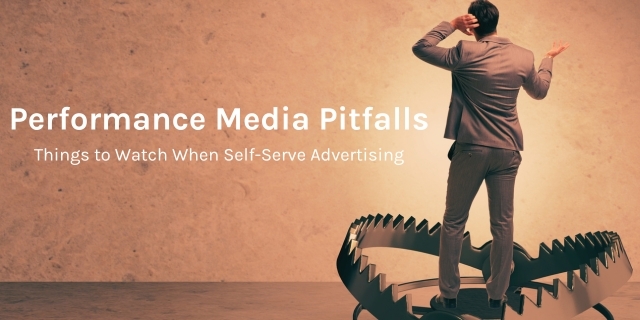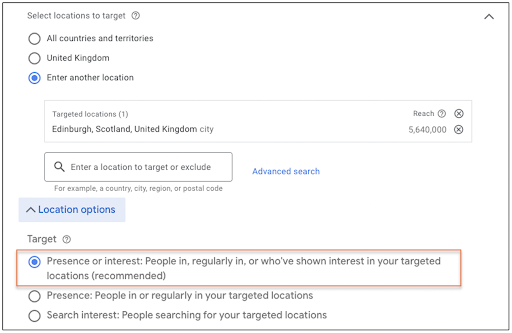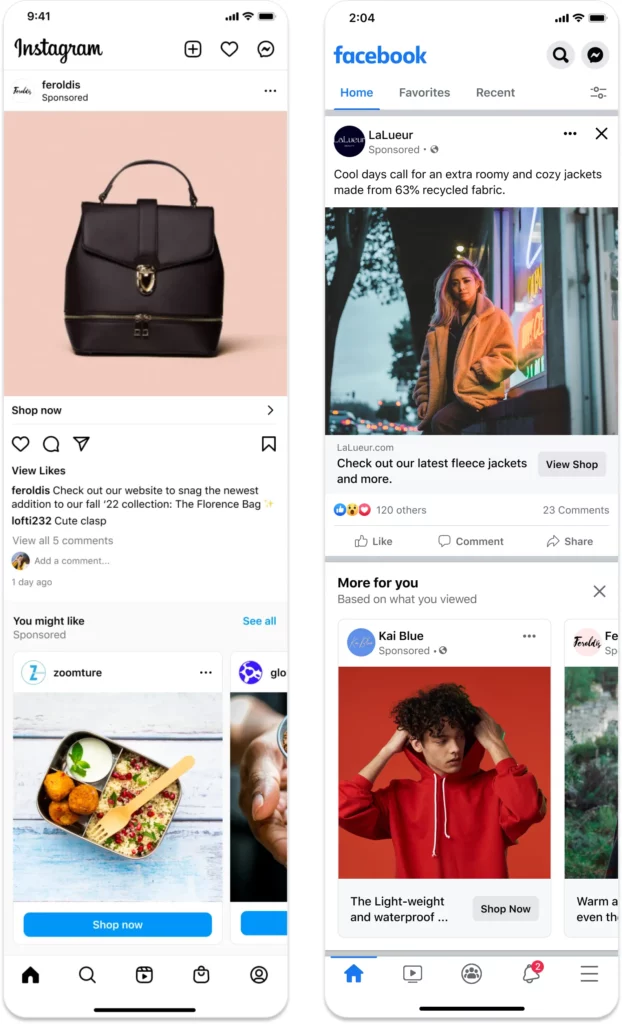Performance Media Pitfalls: Things to Watch When Self-Serve Advertising
Emily Lou • 18th Jul 2023
Self-serve advertising platforms like Google, Meta or Bing Ads operate on a do-it-yourself basis, where you can set up, run, manage, and optimise campaigns all on your own (you could have probably guessed that by the name).
Using self-serve advertising platforms gives you more control over your performance media spend, ads, targeting and duration, than if you were to pre-book a campaign via a 3rd party media owner. This gives you flexibility and agility, though comes with risk and accountability.

Navigating these platforms can be a minefield, with discrete features allegedly designed to improve your campaign performance actually acting as booby-traps to get you spending more with less control of your ads.
Some are easy to avoid, such as over-reliance on broad match keywords, while others can be a little more camouflaged.
Check out some of the most common mistakes we see marketers make on self-serve advertising platforms and learn how best to avoid them.
- Google Ads Location Targeting
Google is essentially one of the 4 horsemen of the self-serve advertising apocalypse. When setting up a new Google Ads campaign, one of the first steps is to select your geo-targeting. This is to allow advertisers to focus on areas where their product/service is available, or serve a region-specific message and so on.

When setting this up, Google defaults to a ‘Presence or Interest’ setting, whereby your ads will target users in your target location, but ALSO people who have shown interest in your location.
For example, if you were running a self-serve advertising campaign targeting the UK, anyone around the world researching things like holidays to the UK, UK news, UK history, UK sports, or UK music will be eligible to see and click your ads, potentially resulting in significant wasted ad spend.
Sneaky sneaky.
Fortunately, this can be avoided at the click of a button by selecting ‘Presence’ only, meaning people in or regularly in your target location will be eligible to see your ads.
2. Bidding and Automated Bidding
Self-serve advertising platforms like Google Ads and Microsoft Ads operate on an auction basis, whereby for every search that a user makes, a real-time auction occurs for advertisers to bid to have their ad displayed. This bid translates into a cost when the ad is clicked, and can range from £0.01 to £100 (or more) depending on the industry or product/service being advertised.
In the olden days, advertisers would set individual bids for every keyword in their arsenal, based on the likely cost per click (cpc) they’d expect to pay for an ad in a premium position. As you can imagine, in large accounts – or as a business scaled – this could become more than a handful from a management perspective.
To simplify this, Google introduced automated bidding strategies, where you could select an objective for your campaign, and Google would apply the most appropriate bids to achieve your goal. These include the likes of Maximise Clicks, Maximise Conversions, Maximise Conversion Value, Target Impression Share, and more (find the full list here).
While these automated strategies do save time, they come with their own pitfalls to watch out for when self-serve advertising.
For example, whether you’re looking for sales or leads, ‘Maximise Conversions’ sounds like the perfect bid strategy to achieve your goal. However, opting for this strategy essentially gives Google the green light to spend your entire budget and see how many conversions it can acquire, regardless of your cost per conversion. Cue inflated CPCs, eye watering CPAs, and quite possibly not the results you had hoped to achieve from your budget.
Setting a target CPA for your campaign is a way around this, but be cautious, if your target sounds to good to be true, it probably will be. When a campaign has an overly ambitious target, it will become hesitant to serve, resulting in underspending. While this won’t waste your budget, it won’t produce results either… not exactly ideal.
We recommend a staggered approach, with a low (or no) CPA target at first to get conversions in and data through the campaigns, then as the algorithm learns, incrementally reduce your CPA target to find a sweet spot that consistently converts at a value that works for your business.
These nuances apply to most automated bidding strategies available through Google.
Paid Social
3. Auto-enabled text optimisation
Self-serve advertising platforms are increasingly embracing automation and leveraging machine learning to enhance ads. One notable feature on Meta’s Ads Manager is the ‘optimize text per person’ option. While it may sound promising to be able to tailor your ad text to the target audience, this feature might not be as advantageous as it initially seems. Let’s explain…
Enabling text optimisation on your ads allows Meta the ability to rearrange the placement of your primary text, headline text, and description text. This can result in a mismatched message that was not what you intended to deliver to your audience.
Opting out of this feature isn’t easy either, this feature is automatically enabled, and there is no easy toggle or button to switch it off. You will have to ensure that Standard enhancements are turned off to be able to manually edit the ‘optimize text per person’.
To add to the challenge, updates are consistently rolled out, introducing changes that are often tucked away in hidden corners of the page. It can be quite the task to stay up to date with these evolving features.
4. Mult-advertiser ads
Another noteworthy update that shouldn’t fly under your radar is the introduction of multi-advertiser ads. Meta has implemented this feature within the ad creation settings, and the interesting part is that it’s automatically enabled when a new ad is created.
With multi-advertiser ads, your ads have the opportunity to appear alongside other ads, often beneath another advertiser’s ad in a carousel format. It’s like joining a group of advertisers who have also opted for the multi-advertiser option.
Keeping this option enabled can increase your impressions while keeping your costs low. However, the quality of impressions should be considered, if your ad is being shown alongside many other advertisers, how viewable will your ad be. There is also no way to determine which ads you will be appearing alongside.
While Meta assures that ads will be shown against complementary services, there’s no guarantee they won’t be competitive.

Conclusion
So, in a nutshell, while self-serve advertising platforms give marketers accessibility and control over their campaigns, they can be tricky to navigate and costly to get wrong. While we’ve covered pitfalls such as location targeting irrelevant audiences, and multi-advertiser ads, these are just a handful of hurdles that advertisers need to be wary of when self-serve advertising.
If you are worried you may be falling into any of these traps, get in touch today for a FREE ACCOUNT AUDIT, and find out how we can help you get the best return from your advertising spend.
Contact Us
Give us a call, or complete the form for a free account audit. We’ll put the kettle on and by the time you get here we’ll already be thinking about your business.


